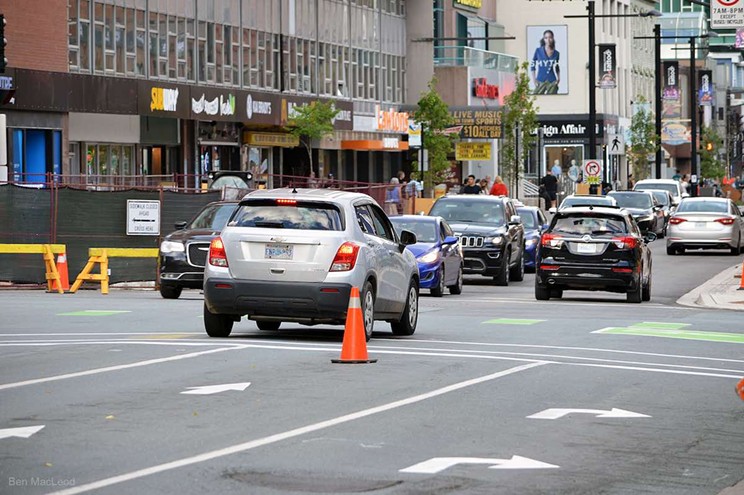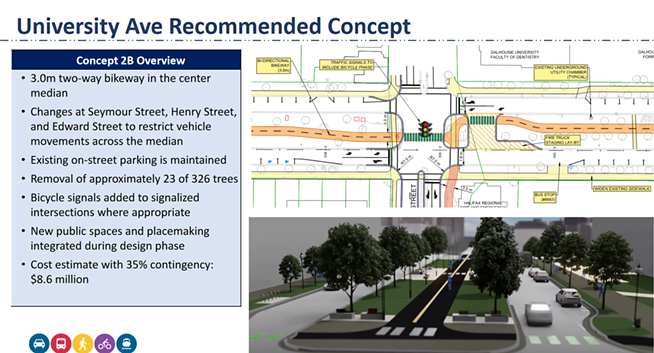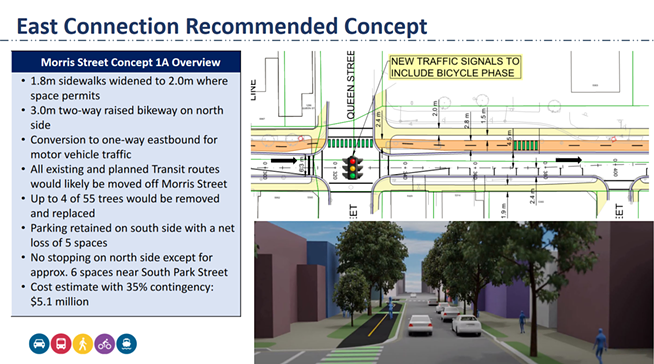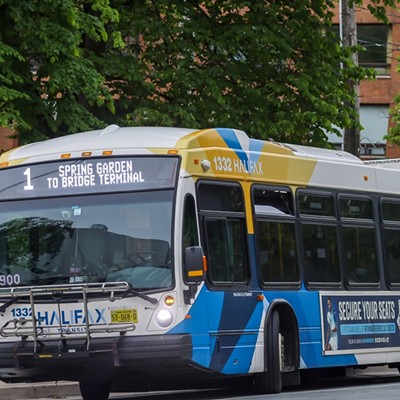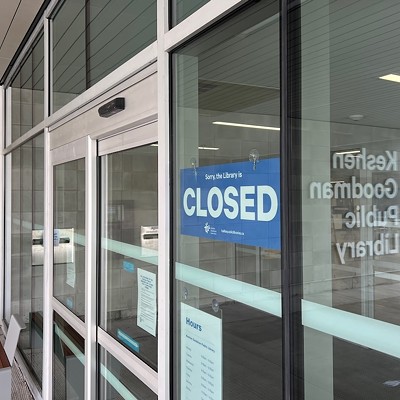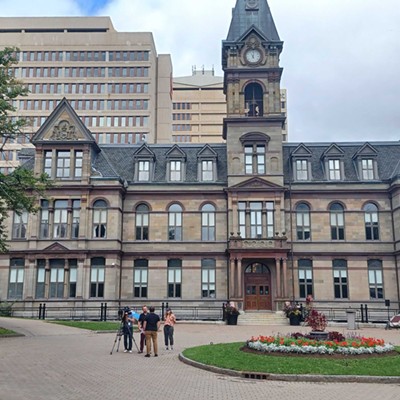Halifax’s Transportation Standing Committee started its Thursday Aug. 29 meeting as it always does, with the public participation section. For the past few Transportation Standing Committee meetings, the public participation section has been dominated by residents of Coburg Road who are absolutely furious that the city is making improvements. Essentially the very end of Coburg Road—down the hill from Oxford Street by the Waegwoltic Club—needed repaving. It also needs a new water main. And nowadays the city is starting to try to ease traffic congestion by offering people non-car transportation alternatives. So the city’s solution to all three problems is to narrow the car lanes on Coburg and add a mixed-use pathway that will will eventually connect the Chain of Lakes Trail to downtown through a planned east-west bike network. Doing all the construction work at once saves money and is more efficient for the city, but the residents of Coburg hate it.
The issue the residents have with this bit of good municipal governance is the Waeg, the private tennis, sailing and swimming club, in its busy summer season, causes congestion on the street from parents dropping their kids off. Residents argue that narrowing the car lanes will only lead to more congestion, reducing emergency vehicles' response time. The city knows this, and that’s why it is building out the mixed-use pathway: so that some of the people currently driving their kids to the Waeg can take bikes instead of cars, reducing car traffic and, therefore, increasing response times.
Besides adding additional transportation options aimed at reducing congestion, this new road design for Coburg will not affect the vehicle lane space dedicated to on-street parking. If the complaining residents were seriously concerned about emergency vehicles, they would ask for the on-street private vehicle storage space (aka parking) be removed so the road could remain wide enough for emergency vehicles. But no one made that argument. It seems that parking may be more important than emergency vehicles getting through.
One of the speakers claimed councillor Waye Mason was “dismissive” of their concerns. Mason jumped in with a point of order because that’s unparliamentary language, but even if Mason was dismissive, it’s probably because he understands why the city is doing this redevelopment. This is the type of fiscally responsible, forward-thinking infrastructure people in the HRM have been crying out for.
Member of Parliament Andy Fillmore (who has definitely not been using his federal position as part of his campaigning as a mayoral candidate 😉) seems to have abandoned his background as a city planner and thrown his support behind the residents trying to prevent Halifax’s evolution into a modern city, and has started advocating against changing Halifax for the better. He told Saltwire that “we’re in an era where we have to be careful how we’re spending municipal tax dollars because there’s a lot of demands on every dollar.” But if he had read the letter Halifax’s Chief Administrative Officer wrote in response to his lobbying (not campaigning 😉), he would know that “to ensure best value for taxpayers, this is an integrated project, meaning that some Halifax Water work, the multi-use pathway, and the street reconstruction are occurring at once. This provides value to taxpayers as it allows for sharing of some common costs with Halifax Water and reduces the construction impact on the community that would be caused by separate projects at different times.”
Here’s to hoping the city remains as dismissive of these whinging complaints as Mason was accused of being.
After the public speakers, the committee got into their agenda of hearing about the plan to create the above-mentioned east-west bike connection across the peninsula, centred on University Avenue. Staff told the committee that they’d done about six years of consultation, and after comparing what staff heard in the consultation process with the HRM’s strategic plans, staff came up with three options to give bike riders a way to use University Avenue to connect from the waterfront to the under-construction Coburg mixed-use pathway. Councillor Mason amended the motion to add South Park Street as an urban greenway and connect it to Coburg’s mixed-use path which, is the entrance to the urban greenway network that leads to the Chain of Lakes Trail.
This discussion strayed into the delayed Spring Garden Road transit-only pilot, which got abandoned after just four disastrous days in 2022 but was supposed to have a second try in spring 2024. Thanks to a motion from Patty Cuttell directing staff to re-consult businesses on Spring Garden and the general lethargy of the HRM’s bureaucracy due to years of tax cuts, the pilot project is now likely dead. This is because by 2028, Halifax will have completed its AAA—“All Ages and Abilities”—bike network, and as part of that process, Spring Garden Road will be turned into a transit-only corridor, whether or not the pilot happens.
As part of this east-west bike connection work, University Avenue is likely to end up looking something like this:
And Morris Street is likely to end up looking like this:
The proposed changes generated a lot of discussion because of some pretty obvious things like: If there is a bike lane in the median of University, what happens to the tents? (To be determined in the future, they have until 2028.) And if Spring Garden is a car-free Transit corridor, and if Morris Street is one way heading to the harbour, then if/when Spring Garden gets shut down for events, this would cause detours for Transit that would be a challenge to work around. Staff couldn’t say what detours would look like because there are too many unknowns for a future hypothetical based in the world of 2028, where Halifax has a completed AAA bike network; nevertheless, councillor Trish Purdy used this perceived uncertainty to try and delay this critical transportation infrastructure. She argued that because council had just approved an increase in density and because the province has designated special planning areas for more density, we should take a “sober second look” at building transportation infrastructure that can accommodate the increased density. Luckily, Purdy was outvoted.
The east-west bike plan will come to council Soon™, and if council also approves the concept as presented to the Transportation Standing Committee at this meeting, then staff will start planning initial design work (the above images are concepts) over the winter with the goal of getting this built, eventually, maybe in 2028.

